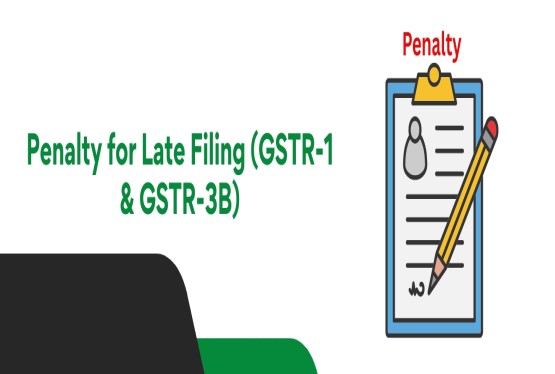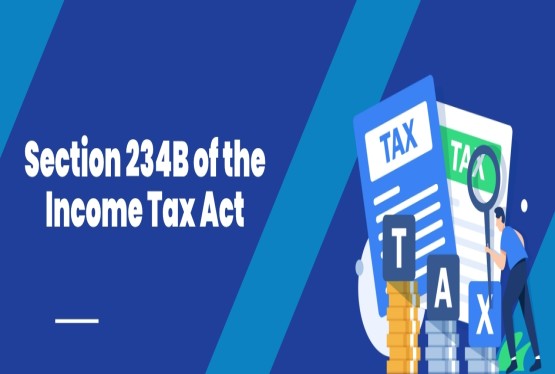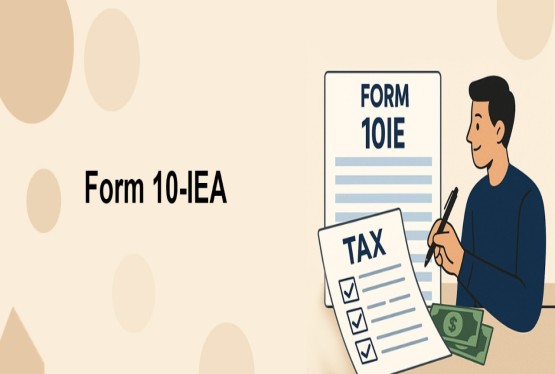Dividends are a form of income that investors earn when they invest in shares or mutual funds. It is the share of profits that companies distribute to their shareholders. Since this is a form of income, it becomes important to understand whether this income is taxable or not. In this article, we will explore the concept of Tax on Dividend Income and understand how Taxation of Dividend Income works in India, especially after the changes introduced through the Finance Act, 2020.
What is Dividend Income?
Dividend income is the profit shared by companies with their shareholders. This profit may come in the form of cash payments, additional shares, or even other assets. Investors who put their money into shares, mutual funds, or Unit Linked Insurance Plans (ULIPs) may receive dividends. The term 'dividend' has a wide meaning under Section 2(22) of the Income Tax Act. It includes not only cash dividends but also certain distributions and transactions by the company that benefit shareholders. These include:
-
Distribution of accumulated profits to shareholders resulting in asset transfer.
-
Distribution of debentures or deposit certificates out of profits.
-
Bonus shares issued to preference shareholders from profits.
-
Distributions made on liquidation from accumulated profits.
-
Reduction of capital resulting in distribution of profits.
-
Loans or advances made by a closely held company to shareholders from profits.
Sources of Dividend Income
Dividend income can arise from various sources, and each has its own tax treatment. Common sources include:
-
Domestic Companies: Dividends received from Indian companies in which you own shares.
-
Foreign Companies: Dividends earned from shares of companies outside India.
-
Equity Mutual Funds: If you opt for the dividend payout option.
-
Debt Mutual Funds: Dividend income arises similarly if opted for the payout mode.
Understanding the source of your dividend income helps determine the applicable tax rules and compliance requirements.
Tax on Dividend Income: Earlier vs. Now
Before Assessment Year 2020-21
Earlier, the tax burden was not on the investor. Dividends from domestic companies were exempt under Section 10(34). The companies were liable to pay Dividend Distribution Tax (DDT) under Section 115-O at 15% plus surcharge and cess before distributing the dividend. Investors were exempt unless their dividend income exceeded Rs. 10 lakh, in which case Section 115BBDA applied a 10% tax.
After Assessment Year 2021-22
The Finance Act, 2020, abolished DDT and shifted the tax burden to investors. Now, the dividends are taxed in the hands of the recipient. If you receive more than Rs. 5,000 from a company or mutual fund, it becomes taxable under your applicable slab rate.
This change increases the tax burden on individuals, especially high-income taxpayers. It also simplifies the corporate taxation system, as companies no longer need to pay DDT.
How are Dividends Classified for Taxation?
The classification of dividend income depends on how the shares are held:
-
Business Income: If you trade in shares and receive dividends, they are considered income from business or profession.
-
Income from Other Sources: If you hold shares as an investment, dividend income falls under this head.
Deductions and Allowances
When Treated as Business Income
If the dividend is taxed under business income, the taxpayer can claim deductions for expenses such as collection charges, interest on loans used for buying shares, and other direct expenses related to earning the dividend.
When Treated as Income from Other Sources
In this case, only interest expenses are allowed as a deduction, and that too, up to 20% of the dividend income. No other expenses like brokerage or commission are allowed.
Tax Rates on Dividend Income
The tax rate varies depending on the recipient and the nature of the investment. Here's how:
|
Category of Assessee |
Dividend Nature |
Rate of Tax |
|
Resident Individual |
From Domestic Company |
As per applicable slab rate |
|
NRI |
GDRs from Indian Company or PSU (purchased in foreign currency) |
10% |
|
NRI |
Shares of Indian Company (purchased in foreign currency) |
20% |
|
NRI |
Any other dividend |
20% |
|
FPI |
Securities other than Section 115AB |
20% |
|
Offshore Banking Unit |
Securities other than Section 115AB |
10% |
This categorization helps you understand the exact tax rate and planning your taxes accordingly.
When to Pay Tax on Dividend Income?
As per Section 8 of the Income Tax Act:
-
Final Dividend: Taxed in the year it is declared, distributed, or paid, whichever is earlier.
-
Interim Dividend: Taxed in the year when it is made unconditionally available to the shareholder.
This provision ensures that the tax is levied timely and correctly.
TDS on Dividend Income
From 1st April 2020, as per Section 194, any dividend paid to a resident individual exceeding Rs. 5,000 in a year attracts TDS at 10%. Budget 2025 has increased this limit to Rs. 10,000 effective April 1, 2025. So, if your dividend is below Rs. 10,000, no TDS will be deducted.
If PAN is not furnished, the TDS rate increases to 20%. This encourages compliance with PAN requirements.
For non-residents, TDS is deducted at 20% under Section 195, which may be reduced if a DTAA exists. However, the taxpayer must submit Form 10F, Tax Residency Certificate, and declaration of beneficial ownership.
Submission of Form 15G and 15H
Residents whose total income falls below the basic exemption limit can submit:
-
Form 15G: For individuals below 60 years of age.
-
Form 15H: For senior citizens.
This ensures that no TDS is deducted if you are not liable to pay any tax.
Advance Tax and Dividend Income
Advance tax is applicable when the estimated tax liability for a year is Rs. 10,000 or more. It must be paid in installments. However, if the shortfall is only due to dividend income, no interest under Section 234C will be charged, provided the full tax is paid in subsequent installments. This exemption does not apply to deemed dividends under Section 2(22)(e).
Dividend from Foreign Companies
Dividends from foreign companies are taxed as "Income from Other Sources." They are added to total income and taxed at slab rates. If you're in the 30% slab, you’ll pay 30% plus cess on the dividend.
You can claim interest deduction up to 20% of the dividend amount. No other expenses are allowed.
TDS is applicable under Section 194, and the same rules apply—10% for amounts exceeding Rs. 10,000 (with PAN) and 20% otherwise.
Relief from Double Taxation
If a dividend is taxed both in India and the country of origin, relief is available under:
-
DTAA (Double Tax Avoidance Agreement): Tax rate varies from 5% to 15%.
-
Section 91: Relief is granted if no DTAA exists.
You must maintain documents like tax-paid proof in the foreign country and a tax residency certificate to claim such relief.
Inter-Corporate Dividend and Section 80M
To avoid cascading tax effects when a domestic company receives a dividend from another domestic company, Section 80M provides relief. If the receiving company redistributes the dividend to its shareholders within one month before filing its ITR, it can reduce that amount from its taxable income.
For foreign dividends:
-
If equity shareholding is 26% or more: Tax at 15% under Section 115BBD, without deduction of any expenses.
-
If less than 26%: Normal corporate tax rate applies, but deductions are allowed for expenses incurred in earning the dividend.
This distinction encourages long-term holdings and structured investment planning.
Filing Your ITR with Dividend Income
It is mandatory to report dividend income in your Income Tax Return. Even if TDS has been deducted, reporting it ensures proper credit and avoids future scrutiny. Compliance Calendar LLP provides expert assistance in managing your dividend income, planning your taxes, and filing your ITR accurately. From tax computation to post-filing support, Compliance Calendar LLP ensures end-to-end service.
Conclusion
With the abolition of DDT, the responsibility now lies with the recipient. Knowing how the Taxation of Dividend Income works, including the applicable rates, deduction limits, and advance tax requirements, will help you stay compliant and make better financial decisions. For seamless support and expert filing, contact Compliance Calendar LLP today.
Email: info@ccoffice.in
Call/Whatsapp: +91 9988424211
FAQs
Q1. Is dividend income taxable in India?
Ans. Yes, dividend income is taxable in India in the hands of the recipient. After the abolition of Dividend Distribution Tax (DDT) from April 1, 2020, all dividend income received by individuals, HUFs, or companies is taxed as per the applicable income tax slab rates.
Q2. How much dividend income is tax-free in India?
Ans. There is no tax-free limit for dividend income. However, Tax Deducted at Source (TDS) is only applicable if the total dividend received from a company or mutual fund exceeds Rs.10,000 in a financial year (revised from Rs.5,000 effective April 1, 2025).
Q3. Under which head of income should dividend income be reported in ITR?
Ans. If shares or mutual funds are held as an investment, the dividend income should be reported under the head “Income from Other Sources.” If they are held for trading, the income will be treated as “Business or Profession” income.
Q4. What deductions are allowed against dividend income?
Ans. If dividend income is taxed under “Income from Other Sources,” only interest expenses incurred to earn that income are allowed as a deduction, up to 20% of the dividend income. No other expenses like brokerage or commission are allowed.
Q5. Is TDS applicable on dividend income?
Ans. Yes. As per Section 194, a company or mutual fund must deduct 10% TDS if dividend paid to a resident individual exceeds Rs.10,000 in a financial year (Rs.5,000 until FY 2024–25). For non-residents, TDS is deducted at 20% under Section 195, subject to DTAA benefits.
Q6. Can senior citizens avoid TDS on dividend income?
Ans. Yes. Senior citizens with total income below the basic exemption limit can submit Form 15H to the dividend-paying company or mutual fund to avoid TDS. Others below the taxable limit can submit Form 15G.
Q7. How is dividend income from foreign companies taxed?
Ans. Dividend income from foreign companies is added to your total income and taxed at the applicable slab rate. You can claim foreign tax credit or DTAA relief if tax was already deducted in the foreign country, using Form 67 during ITR filing.








_crop10_thumb.jpg)


















































































_for_FY_2025-26_crop10_thumb.jpg)












_learn_crop10_thumb.jpg)








_Filing_Due_Dates_for_FY_2024-25_learn_crop10_thumb.jpeg)







































_of_GST_Act_learn_crop10_thumb.jpg)










_Under_GST_learn_crop10_thumb.jpg)









_crop10_thumb.jpg)


_crop10_thumb.jpg)





_learn_crop10_thumb.jpg)






















_of_the_Income_Tax_Act_learn_crop10_thumb.jpg)



_learn_crop10_thumb.jpg)






_learn_crop10_thumb.jpg)






_crop10_thumb.jpg)




















_in_The_Income_Tax_Act,_1961_learn_crop10_thumb.jpg)



_learn_crop10_thumb.jpg)



_of_the_Income_Tax_Act_learn_crop10_thumb.jpg)


_Of_Income_Tax_Act_learn_crop10_thumb.jpg)








_learn_crop10_thumb.jpg)








_learn_crop10_thumb.jpg)
_crop10_thumb.jpg)






















_learn_crop10_thumb.jpg)
_for_Import_and_Export_learn_crop10_thumb.jpg)



























